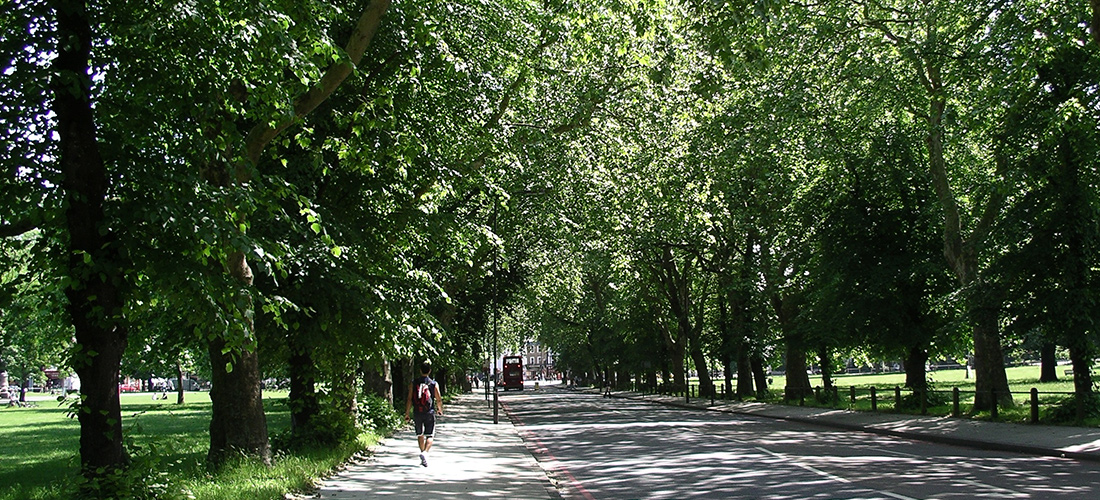Plane trees, tall, magnificent specimens, immense trunks, bark dappled grey, cream and light green, giant canopies reaching skywards. The feeling of walking up to Clapham Common was almost ecclesiastical. They were green architecture, tree cathedral, space makers and place makers.
This was The Chase, Clapham and today only about five remain, isolated lonely giants. Systematic, stealthy destruction has taken place as people chop trees down and pave over their front gardens to make car parks. It’s happening right across London. So far two thirds or twelve square miles of London’s front gardens have been paved over, trees felled, vegetation grubbed out. We have quietly been altering our streetscape, robbing the character of our city.
The Plane trees in The Chase used to envelope the walker leaving only a slice of sky visible. They mirrored the scale of the grand Victorian villas giving a coherence to the street. Now the road appears wider, open, alien, that special feeling has gone. Front gardens have been paved over with hard materials increasing water run-off into our overloaded Victorian drains which overflow into the river causing flooding downstream. Occasionally trees are replaced but usually with small decorative trees with no sense of scale.
The Victorians understood how avenues, rows and grids hold a city together. They create patterns that are woven into the fabric of a city. Place des Vosges in Paris is a classic example of how trees can make spaces. Planted in a tight grid, the trees become a room, their canopies are the ceiling, the sense of place is powerful. These grids of trees are connected to avenues and lines of trees. Occasionally, resting at a street corner wherever there is a slight widening, a pause point, a special individual tree is planted. Almost like a jewel on a black dress, a Catalpa or Paulownia, their immense exotic leaves delight the walker. This is green architecture used purposefully to bond a city together.
London still has lots of streets lined with large trees but as they decline there is a move to replace them with the small and insignificant. A belief prevails that the city can redeem itself by introducing fragments of agrarian landscape. The pastoral and the horticultural are favoured over using trees which reflect the scale of adjacent buildings or the spaces they inhabit. Local councils are also busy transforming our cities into horticultural arboreta. A mish-mash of trees planted in a pick n’ mix fashion now adorn streets which once felt unified by large trees of a single species. Trees are regarded as individuals rather than understanding the collective power of the clump, row, grid or avenue.
As we embellish our city with trees more suited to a suburban garden, adorn our squares with ‘Incredible Edible’ planter boxes filled with vegetables, we feel smug about our green credentials. When will we look skyward and notice that our mighty trees have all but gone?
Feb 2016

